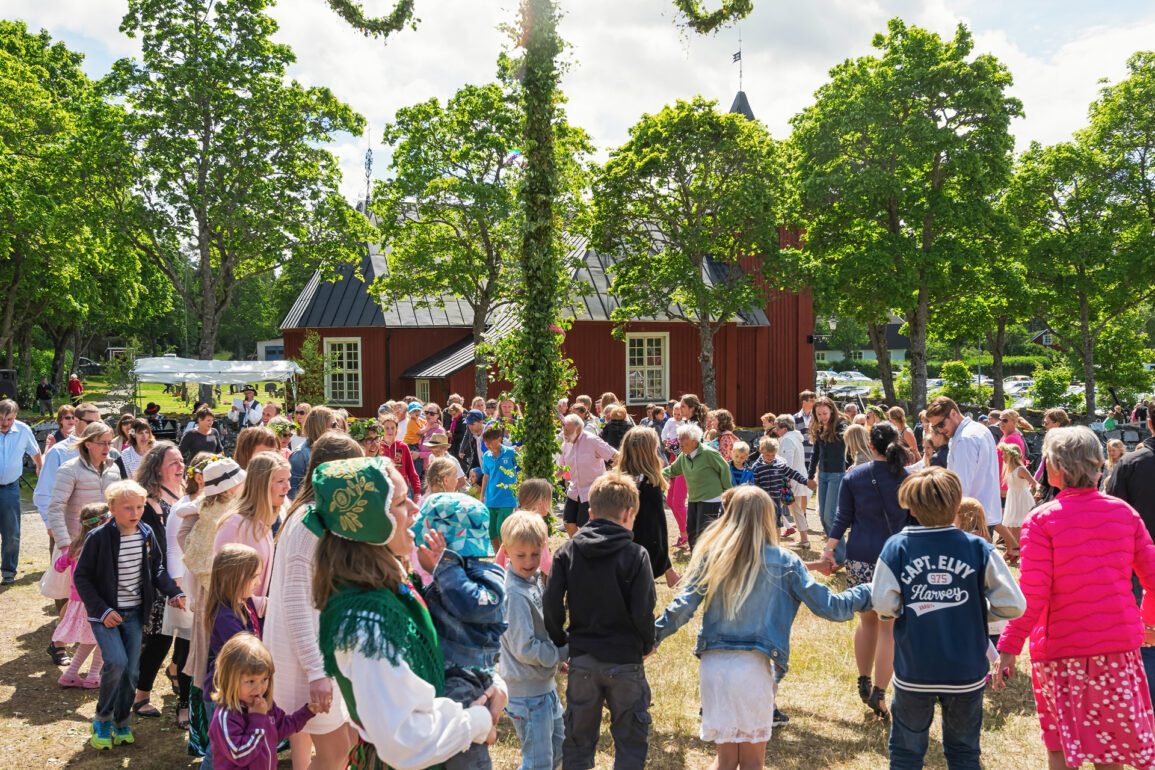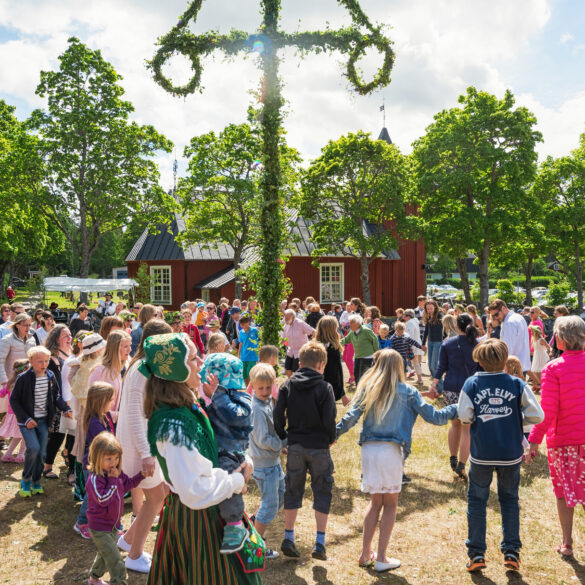Leaving behind the dark winter months of snow, and the dancing Northern Lights, we welcome the luscious fluorescent green of the summer foliage and the endless days of midnight sun. And, of course, there’s the famous midsummer celebrations. Marina Georgescu tells you what to expect.
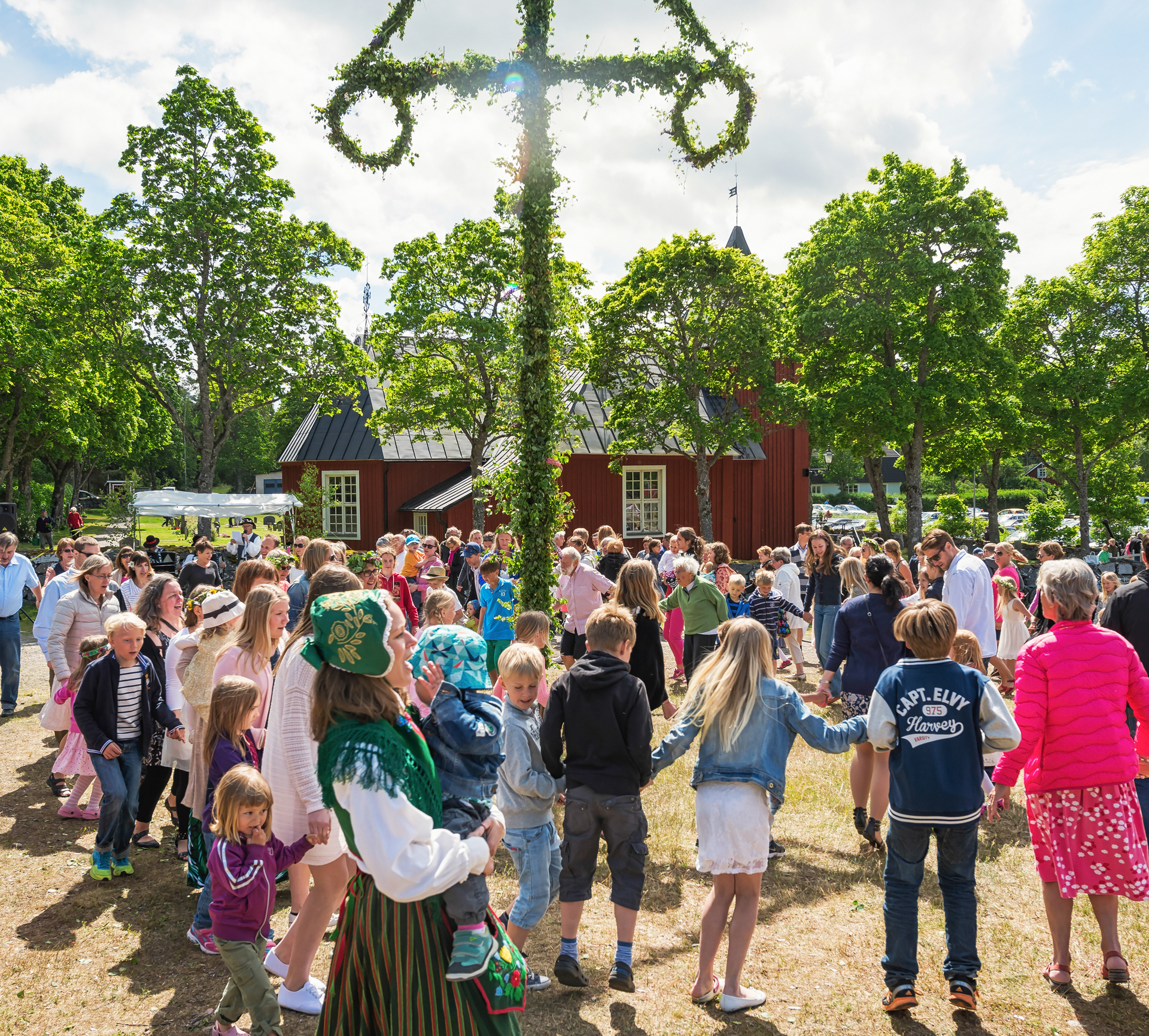
You are in for a treat if you haven’t yet experienced a Norrland midsummer. The summer solstice, or longest day of the year, falls on June 21st in 2022, to be followed a few days later by a lively and not-to-be-missed midsummer celebration. Excitement builds up during the week, shops often being rammed with people stocking up on food, drink and other necessities for the Midsommarafton (Midsummer’s Eve) and Midsommardagen (Midsummer’s Day) festivities on June 24th and 25th respectively.
Pagan solstice
Midsummer celebrations are a national tradition, so not specific to Norrland, and second only to Christmas in the Swedish festivity calendar. Midsummer bonfires have been lit around Europe since the sixth century and the holiday has its roots in the pagan solstice festival celebrated on June 24th. It was christianised in the 1300 and 1400s to commemorate St. John the Baptist. Historically, the day marks the midpoint of the growing season – halfway between planting and harvesting, and is known as one of the four quarter days in some cultures. In 1952 the Swedish Parliament decided that midsummer should always be celebrated on a weekend and, as a result, the dates vary from June 20th to 26th. The concept is straightforward: get ready to party big time, eat until you burst and sing a bunch of drinking songs at the top of your voice.‘Helan Går’ (‘Take It All’) is a mainstay and probably tops the all-time Swedish midsummer drinking song chart. If you party with locals, chances are they will have small printed song sheets laid out on the table.
Sing, sing sing!
In a uniquely Swedish tradition, new songs are regularly composed by using known melodies and making up lyrics. The Museum of Spirits in Stockholm has collected more than 12,000 drinking songs and, if you sang one per day, it would take more than 32 years to sing them all. Having to sing a song beforeyou say ‘skål’ and have a shot of drink may be a bit confusing, but for Swedes it makes perfect sense.
Booze blues
Alcohol can be more of a taboo subject in Sweden than in other European countries. After the introduction of liquor in Sweden in 1467, drinking gradually became a national health problem. In 1829 the consumption per capita was 46 litres of alcohol. It would take 90 years, but the authorities eventually introduced a rationing system (from 1919-1955) called Brattsystemet, named after medical doctor and liberal politician Ivan Bratt. In short, citizens could apply for a rationing book and those approved were allowed to buy a certain amount of alcohol per month, the amount depending on things such as income, gender and social status.
The ration book (motbok) was stamped and, once the limit had been reached, the holder had to wait until the next month to buy more. In 1948, the average purchase amount allowed per motbok permonth was 1.82 litres of spirits. After rationing disappeared in 1955, today’s government-owned chain of liquor stores, Systembolaget, was created. Its monopoly makes it the only Swedish retailer allowed to sell alcoholic beverages that contain more than 3.5% alcohol by volume.
Feel the magic!
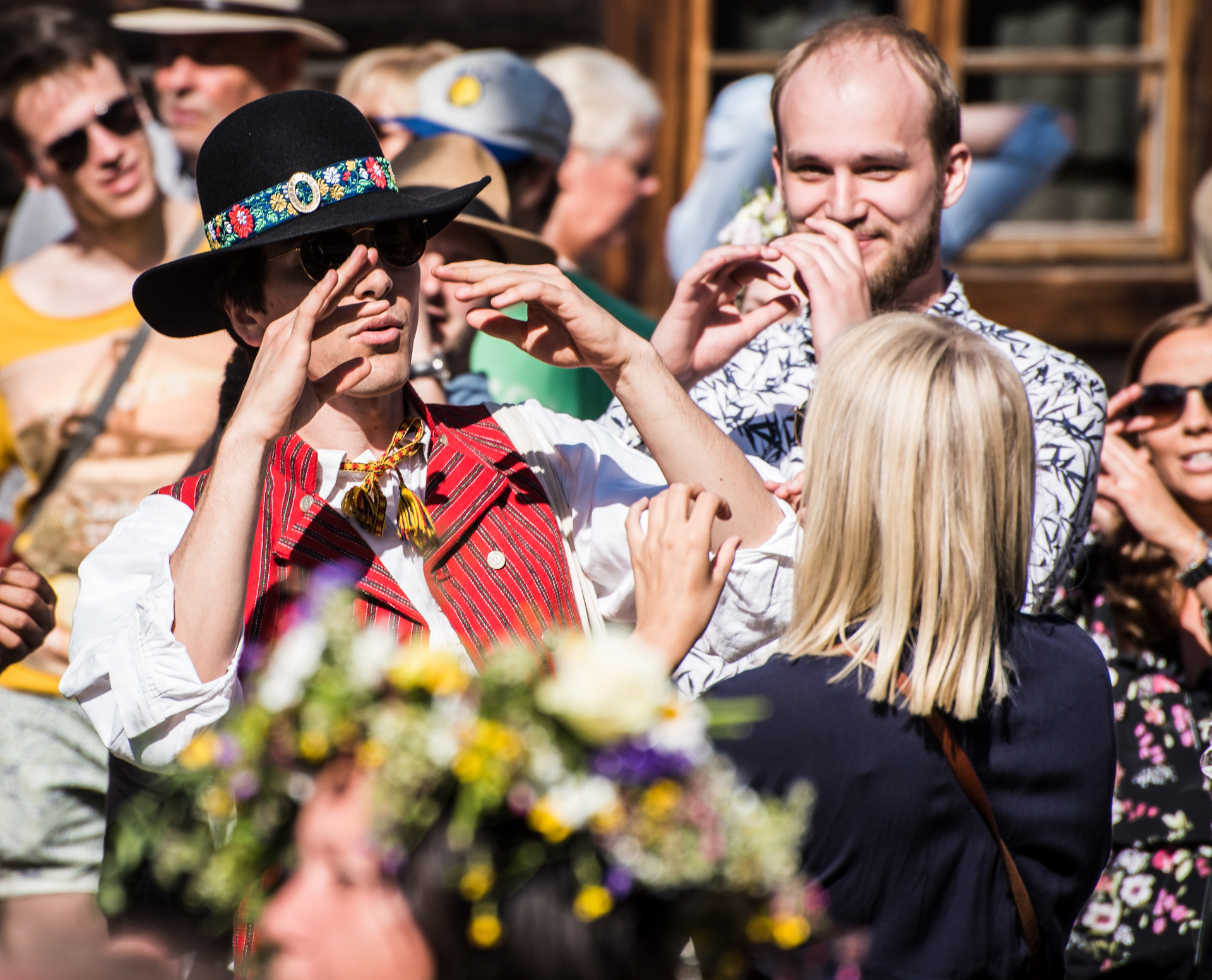
If your social life has suffered of late, this is the time to put things right and enjoy a truly Swedish tradition dating back to times when midsummer night was considered magic and mysterious, with plants acquiring healing powers and used to predict the future. Legend says that if you pick seven different kinds of flowers in silence (so as to not break the magic) and put them under your pillow, you will dream of your future spouse. So, singletons, this might be the day to believe in fairies and give it a try. Others say that walking barefoot or rolling naked in the dew, as the midsummer night turns into dawn. helps you stay healthy. Legend also has it that wearing a wreath of flowers in your hair is an old symbol of rebirth and fertility. And it doesn’t end there; preserving and drying these flowers throughout the year and placing them in a Christmas bath will keep your family healthy through the long, cold winter. It’s never too late for some good old magic.
Kermit would love it
It wouldn’t be a real Swedish midsummer celebration without the maypole (midsommarstång) wrapped with green garlands and flowers. The famous and hilariously funny song and dance number ‘Små Grodorna’ (‘Small Frogs’) is another firm fixture in Swedish midsummer celebrations. While squatting and dancing around the pole with your hands behind your back or around your ears, you are expected to sing ‘the small frogs, the small frogs, are funny to look at. No tails, they have no tails. No ears, they have no ears’, but preferably in Swedish.
The melody originated from the ‘The Onion Song’ (‘La Chanson de l’Oignon’), a military march from the French Revolution, and the lyrics are inspired by the British who changed the text with condescending irony to ‘Au Pas, Grenouilles’ (In Step, Little Frogs). Playing kubb could be an alternative if the small frogs don’t appeal, the objective being to knock down wooden blocks by throwing wooden sticks. The rules, though, are such that there is potential for friendly (and not-so-friendly) arguments between participants, so go easy.
So much food!
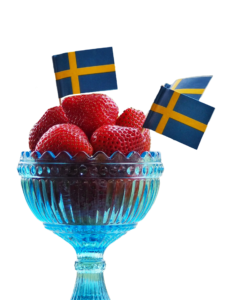
Skellefteå’s historical Bonnstan normally hosts midsummer festivities with a maypole and dancing, for example. Check social media, the tourism office or the municipality’s website for information nearer the time. Don’t forget to buy all you need in good time, as it is a public holiday with many offices and shops closed. And last but not least, enjoy life and have yourselves a great midsummer. celebration.
Julia Mårtensson from Skelleftehamn loves celebrating midsummer almost as much as she does Christmas. “At Christmas we all get together, while at Midsummer everyone kind of celebrates in their own houses, at least to start with”, she explains excitedly.
Every year they build and decorate the maypole and everyone, no exception, dances around it singing ‘Små Grodorna’. She loves the fact that her family follows the tradition in its true sense, and is frustrated that some people just want to take the day off and focus on drinking instead of the celebration itself. “It is a joyful time for us, everyone is happy”, she adds. In the Mårtensson household, festivities start in the afternoon with singing and dancing before a fantastic spread of mouth-watering food. Activities resume with board games, kubb and volleyball. Family friends normally show up later and the fun continues, and may even stretch to a very late swim. Because they live in Skelleftehamn and it is daylight all day, there is nothing stopping the Mårtenssons from a spontaneous swim in the wee hours.
ASK A LOCAL

Julia Mårtensson from Skelleftehamn loves celebrating midsummer almost as much as she does Christmas. “At Christmas we all get together, while at Midsummer everyone kind of celebrates in their own houses, at least to start with”, she explains excitedly.
Every year they build and decorate the maypole and everyone, no exception, dances around it singing ‘Små Grodorna’. She loves the fact that her family follows the tradition in its true sense, and is frustrated that some people just want to take the day off and focus on drinking instead of the celebration itself. “It is a joyful time for us, everyone is happy”, she adds. In the Mårtensson household, festivities start in the afternoon with singing and dancing before a spread of mouth-watering food. Activities resume with board games, kubb and volleyball. Family friends normally show up later and the fun continues, and may even stretch to a very late swim. Because they live in Skelleftehamn and it is daylight all day, there is nothing stopping the Mårtenssons from having a quick swim in the wee hours.
